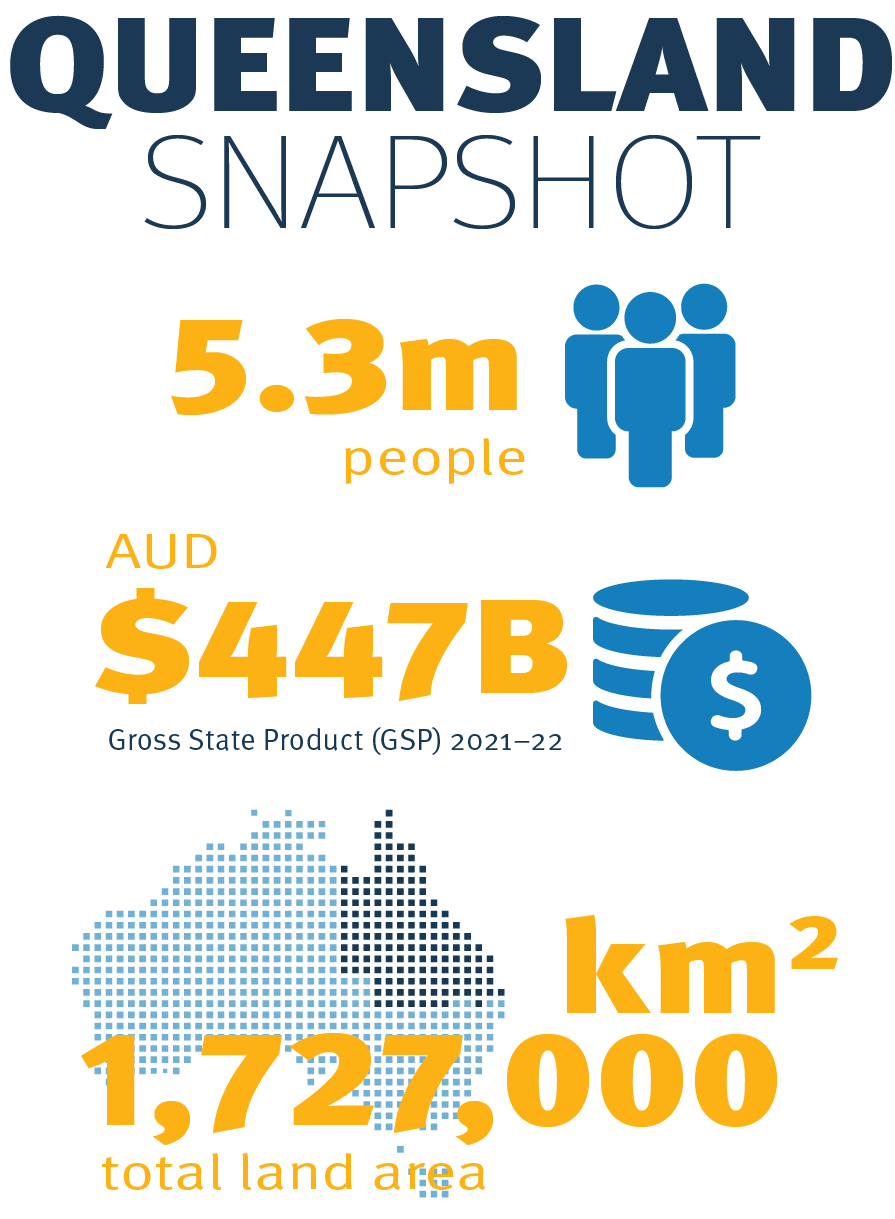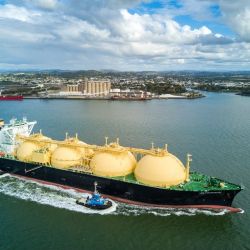Economic outlook and stable government
Stable government and economy
Australia’s federal and state governments are stable, reliable and encourage foreign investment.
In 2022, Australia had the 12th largest economy in the world, and despite global economic uncertainty, is still predicted to experience economic growth this year.


Over the past two decades, Queensland’s economic growth has generally exceeded the national average. Investors can benefit from being part of a strong economy with growing employment and strong business conditions.
To accelerate the momentum building in the economy, the Queensland Government partners with the private sector on significant projects.
By facilitating new investment, the government is creating a new generation of highly skilled jobs, supporting industry development and driving the clean energy transformation.
The Queensland Government’s suite of investment programs includes the $520 million Invested in Queensland program and $100 million Critical Minerals and Battery Technology Fund that are available to investors across a range of priority industry sectors.
For more information visit www.treasury.qld.gov.au/investment.
Queensland's exports


Case study: enabling the CSG industry

The gas industry is one example of how well Queensland’s resources industry and government can pivot to meet the global market’s changing needs.
It all began with the release of a state-government policy that domestically and internationally signalled Queensland’s ambition for a world-class coal seam gas (CSG) and liquefied natural gas (LNG) industry, and secured local demand for natural gas.
Four years after the release of the policy, exploration and production had boomed and there were eight live proposals to export gas from Queensland.
Fast forward five years and there was another seven-fold increase in production and a huge ramp up in ‘proven and probable’ (2P) reserves. A multi-billion-dollar investment ushered in the world’s first CSG-LNG export industry, linking upstream production in the Surat and Bowen Basins to downstream processing on Curtis Island near Gladstone.
This previously small, local industry had transformed into an export powerhouse, generating more than $66 billion in export earnings and making Australia the world’s largest exporter of seaborne LNG.
Commitments to grow the resources industry
The Queensland Government backs the resources industry through investment in the following areas.
Exploration
It all starts with exploration. This can be a costly exercise—it can take several hundred exploration projects to yield a deposit of sufficient quality and size for a mine.
We have invested in critical minerals exploration to help discover and define deposits. Our investments include:
- $22.6 million in grants to supercharge exploration for critical minerals over the next five years
- $23.8 million in geoscience projects and grants for exploration over the last four years
- $10 million in geophysical data to help explorers and investors better understand our state's geology
- $5 million in geoscience research to aid exploration, discovery and extraction of critical minerals.
Infrastructure
Queensland’s governments have a long record of investment that has resulted in a strong network of well-developed infrastructure. From major ports and airports to highways and rail networks, Queensland has the infrastructure in place to support future investment.
Recent investments to support a critical minerals industry include:
- $5 billion to deliver high-capacity power from the North West Minerals Province to Queensland’s renewable energy manufacturing epicentre in Townsville
- $300 million to improve the transportation connection from the North West Minerals Province to the Port of Townsville, where the majority of bulk products are exported
- $75 million to build an Australian-first critical minerals demonstration facility.

Innovation
Queensland’s well-established intellectual capability in geoscience and mining has generated capacity to benefit investors, resource companies, manufacturers, retailers and customers along the supply chain.
Our continuing investments in research, development and innovation for the resources industry include:
- $5 million to design programs that will determine the extent to which valuable minerals can be extracted by reusing waste from existing resources-related activities
- $5.7 million for the Resources Centre of Excellence (RCOE) in Mackay to develop a new Future Industries Delivery Hub—extending the capacity of their highly successful resources training and METS incubator facility.

Additionally, Queensland’s abandoned mines portfolio has considerable potential for re-commercialisation. We have commenced a pilot program to re-commercialise the area encompassing the former Wolfram Camp mine, Bamford Hill mine, and surrounding exploration areas.
Creating demand
The Queensland Government’s commitment to renewable energy and net zero emissions has generated a strong local demand for renewable energy equipment, supporting Queensland’s resources industry.
Our climate change commitments that will drive demand for Queensland’s critical minerals include:
- 30% reduction on 2005 GHG emissions by 2030
- powering Queensland with renewable energy at 50% by 2030, 70% by 2032, and 80% by 2035
- zero net emissions by 2050.
- Last updated
- 21 July 2023
- Last reviewed
- 21 February 2023